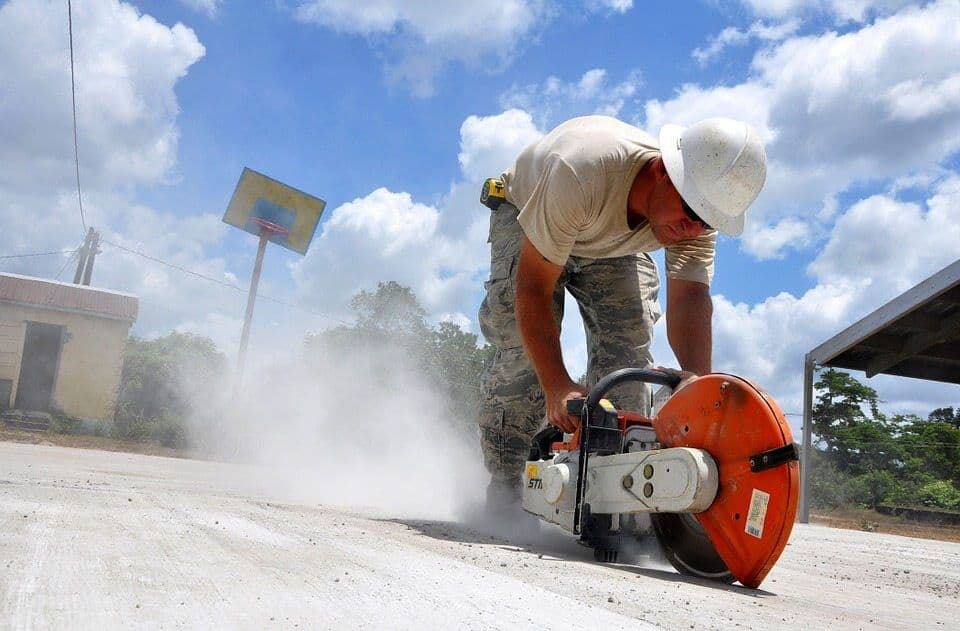Silica Testing – Industrial Facility
Compliance for Silica Testing in an Industrial Facility
Industrial Glass Etching – San Francisco Bay Area, CA
Compliance Standards Summary:
OSHA has issued two standards to protect workers from exposure to respirable crystalline silica — one for general industry and maritime, and the other for construction — in order to allow employers to tailor solutions to the specific conditions in their workplaces. Silica testing is performed to meet compliance.
General industry and maritime employers must comply with all requirements of the standard as of June 23, 2018.

2016 – Secretary of Labor Thomas Perez delivers remarks at the International Masonry Training and Education Institute during the Silica Rule roll out announcement. Courtesy of the Dept. of Labor
HBS tested workers and work areas in a glass etching operation and provided documentation of compliance that satisfies the OSHA Standard.
Silica Testing Process:
Osha provides a fact sheet for Silica testing – see excerpts below:
OSHA Fact Sheet – OSHA’s Crystalline Silica Rule: General Industry and Maritime
The standard for general industry and maritime requires employers to:
- Measure the amount of silica that workers are exposed to if it may be at or above an action level of 25 μg/m (micrograms of silica per cubic meter of air), averaged over an 8-hour day
- Protect workers from respirable crystalline silica exposures above the permissible exposure limit of 50 μg/m averaged over an 8-hour day
- Limit worker access to areas where they could be exposed above the PEL
- Use dust controls to protect workers from silica exposures above the PEL
- Provide respirators to workers when dust controls cannot limit exposures to the PEL
- Restrict housekeeping practices that expose workers to silica where feasible alternatives are available
- Establish and implement a written exposure control plan that identifies tasks that involve exposure and methods used to protect workers
- Offer medical exams — including chest X-rays and lung function tests – every three years for workers exposed at or above the action level for 30 or more days per year
- Train workers on work operations that result in silica exposure and ways to limit exposure
- Keep records of worker’s silica exposure and medical exams.
Silica Testing in an Industrial Facility Highlights:
HBS tested workers who may have been exposed to respirable silica and the work areas where sand blasting and glass etching was occurring at a San Francisco Bay Area facility. Testing was performed to the NIOSH 7500 Standard, which is an OSHA approved method to comply with the new standard.
All workers and work areas were tested to determine the 8-Hour TWA (Time Weighted Average) for respirable silica. Workers wore testing pumps on their person while they went about their normal work activities. Other testing pumps were placed in the work area.
All workers and work areas for this particular test returned results of no detectable respirable silica. HBS was able to document that the work process was in compliance and no specific corrective action was needed. Reports and documentation were provided by HBS and kept on file by the employer to satisfy the OSHA rule.
Case Study Silica Testing Conclusion:
Whether for general industry, maritime, or construction, HBS can test and document whether an employer is in compliance with the new OSHA Standard.
Silica testing should be performed by an independent industrial hygienist or IH firm such as Healthy Building Science. Employers should not perform testing in-house to avoid perceived conflict of interest. If any results measure above the OHSA PEL (Personal Exposure Limit) HBS can recommend and assist with corrective actions. Affected areas and workers can then be re-tested to assure compliance.
Silica Testing Project Team:
David Sasse, Senior Environmental Inspector, CMI, CIE
Council Certified Microbial Investigator
Council Certified Indoor Environmentalist
Board awarded by the American Council for Accredited Certification
Jose Acosta, Senior Environmental Inspector, CRIE, CMI
Council Certified Residential Indoor Environmentalist
Council Certified Microbial Investigator
Board awarded by the American Council for Accredited Certification

